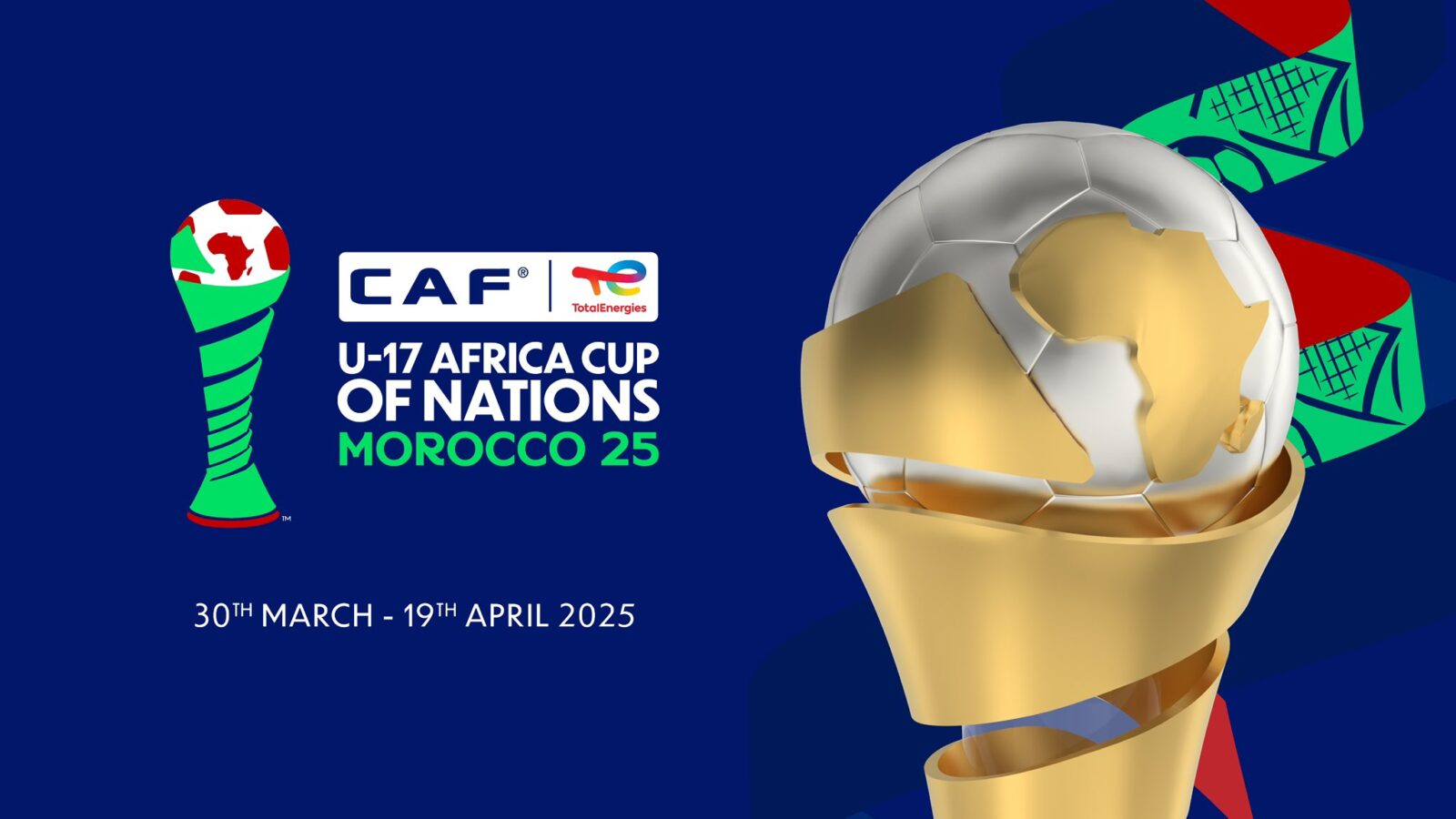While the CAF U-17 Nations Cup doubles as a U-17 World Cup qualifier, it remains a competition to be won. Ten teams will ultimately emerge as Africa’s representatives on the global stage, but the battle for continental glory is far from over.
By Tuka Letura
The 2025 CAF U-17 Africa Cup of Nations, currently taking place in Morocco, is shaping up to be one of the most exciting editions yet. The stakes are higher than ever, with 10 coveted spots available for the FIFA U-17 World Cup in Qatar, and the tournament expanded to 16 teams.
Each participating nation arrived with hopes not only of winning the continental title but also of progressing to the global stage. This year’s tournament features 16 teams divided into four groups of four, with the top two teams from each group advancing to the quarter-finals.
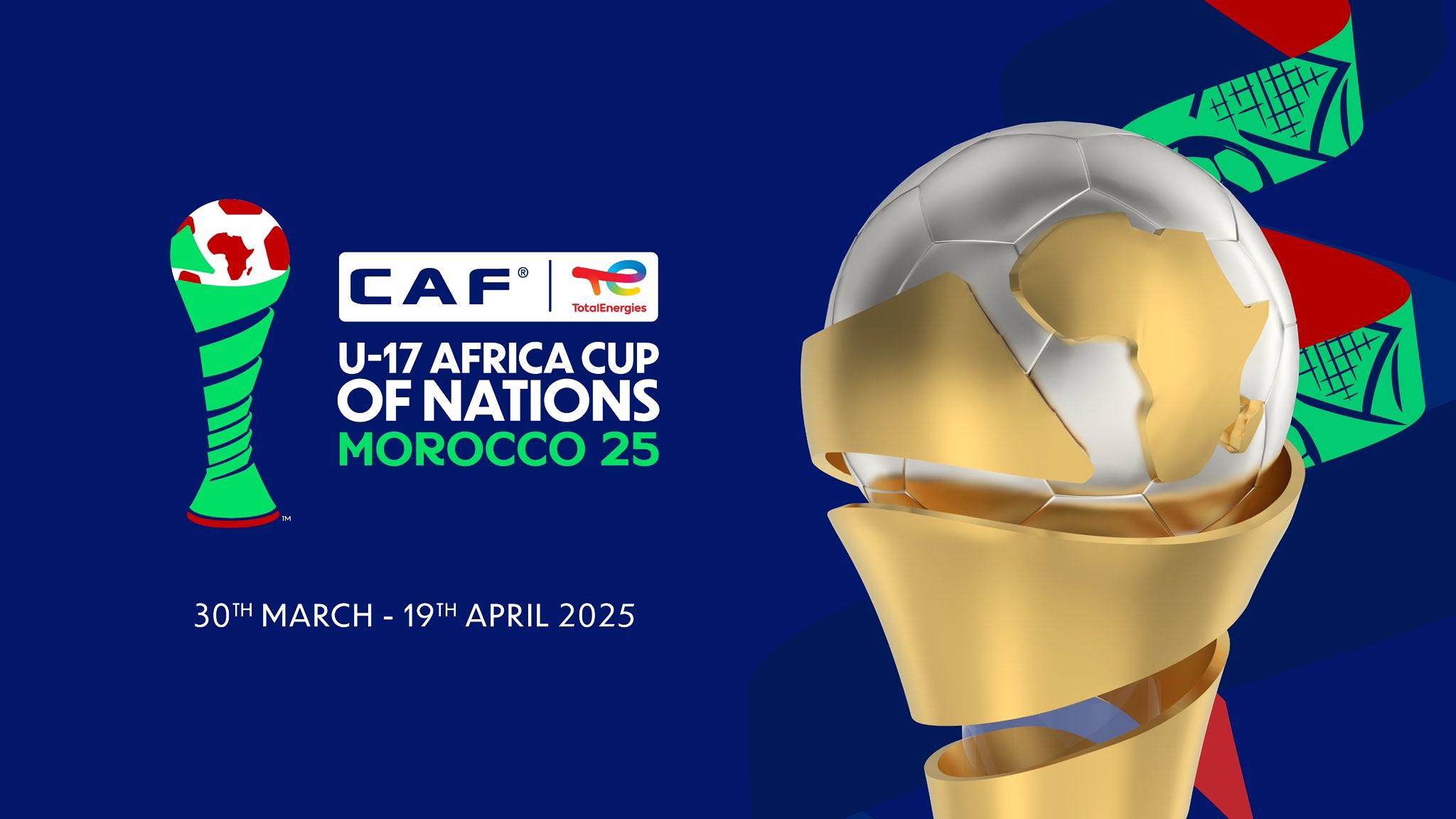
These eight teams are guaranteed places at the 2025 FIFA U-17 World Cup. The final two World Cup spots will be decided through play-off matches.
Four Moroccan cities—Casablanca, El Jadida, Mohammedia, and Berrechid—are hosting the games. Well-maintained stadiums such as Stade Larbi Zaouli and Stade Ben M’Hamed El Abdi serve as venues for the fixtures.
Now that the group stage has concluded and the tournament is nearing its end, it’s time to review everything that has happened so far, including team performances, qualifications, standout players, and what to expect in the knockout stages.
Group Stage Recap
Group A
Morocco entered the CAF U-17 Nations Cup with high expectations and overwhelming home support—and they certainly delivered. The young Atlas Lions dominated Group A with impressive performances, showcasing both clinical attacking prowess and resolute defending.
Playing comfortably on home soil, Morocco secured wins against both Uganda and Tanzania without conceding a single goal. They also managed a hard-fought, goalless draw against Zambia, which solidified their position at the top of the group.
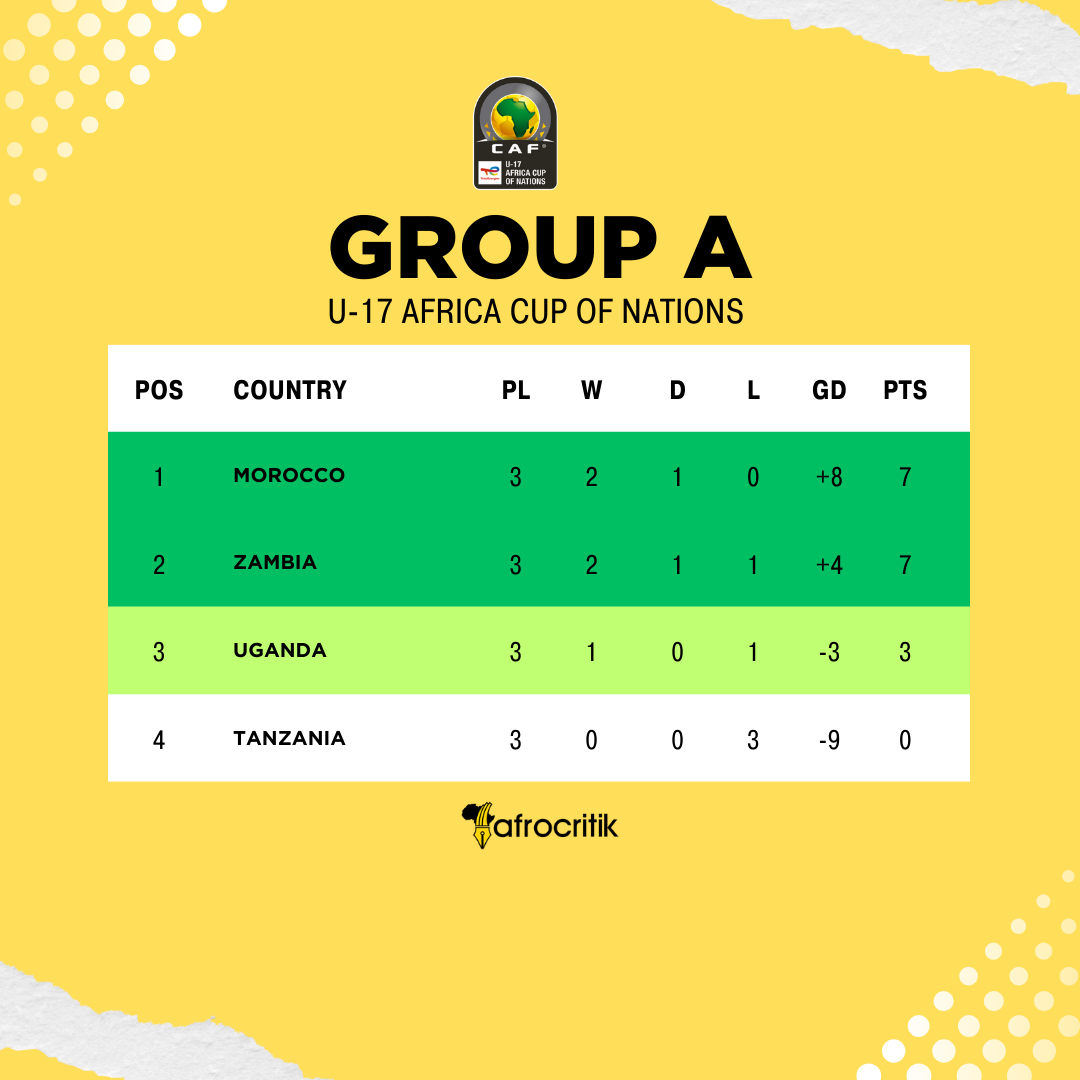
Meanwhile, Zambia defeated both Uganda and Tanzania. However, their inferior goal difference meant they finished second in the group standings.
A solitary win for Uganda against a winless Tanzania was enough to secure third place, keeping their hopes of World Cup qualification very much alive, while Tanzania were knocked out of the competition.
Group B
Burkina Faso swept through the group stage of the CAF U-17 Nations Cup with ease. The young Stallions won all of their matches, picking up maximum points and topping the group.
They began with a sensational 2-1 victory over Cameroon, followed by a hard-earned 2-1 win against Egypt. They rounded off the group stage with a comfortable 2-0 victory over South Africa, with 15-year-old Ashraf Tapsoba scoring two-thirds of their group-stage goals.
South Africa finished second in the group after a dramatic start to the campaign, defeating Egypt 4-3. However, they were unable to maintain consistent performances. A draw against Cameroon and a subsequent loss to group leaders Burkina Faso saw them do just enough to secure second place.
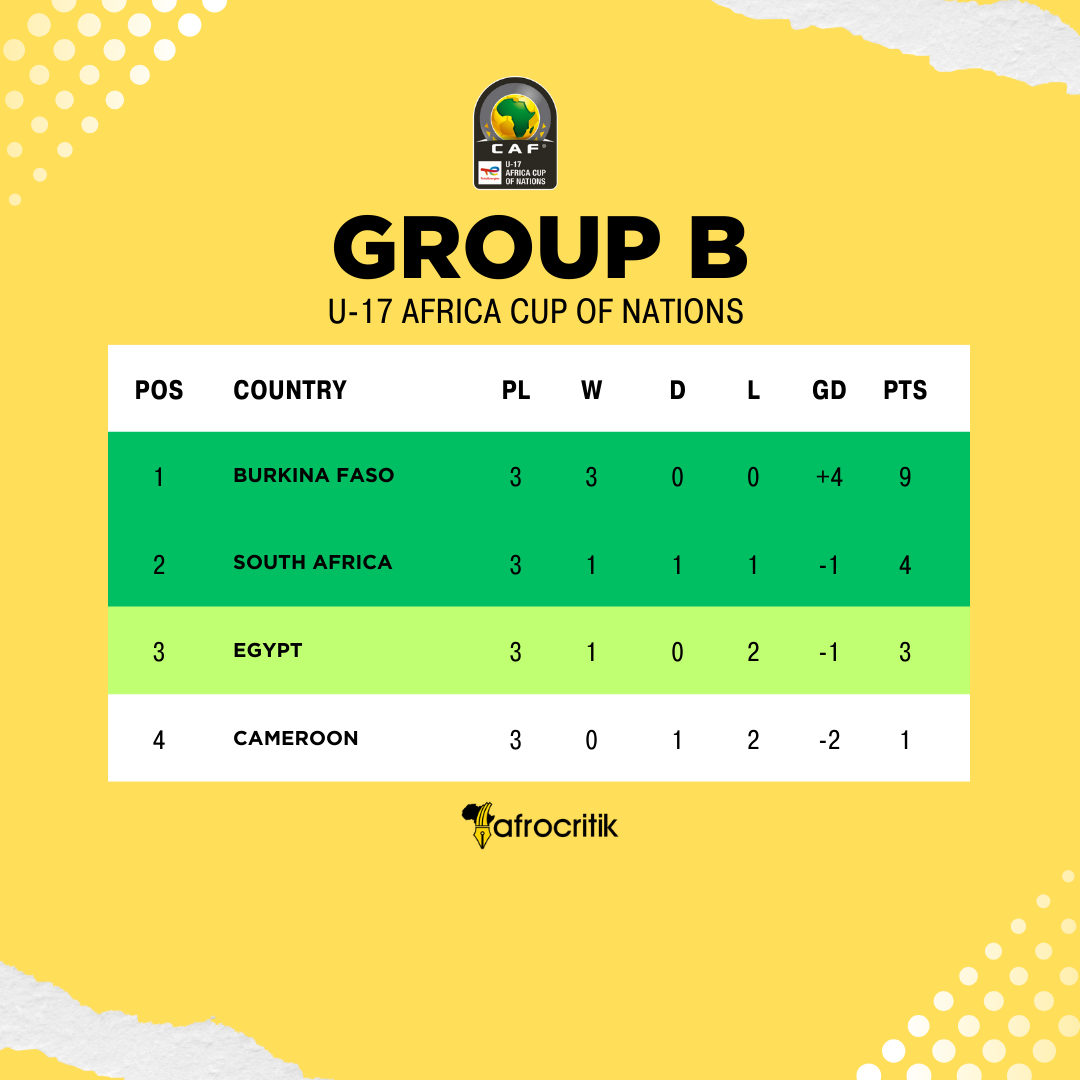
Egypt, despite scoring six goals—more than second-placed South Africa—were unable to finish in the top two. They managed only one win, against Cameroon, and suffered narrow 2-1 and 4-3 defeats to Burkina Faso and South Africa respectively. They finished third, keeping their hopes of World Cup qualification alive.
Cameroon’s performance in the CAF U-17 Nations Cup was disappointing. They managed only one point from a draw with South Africa, losing to both Burkina Faso and Egypt. They finished bottom of the group and were consequently sent home early.
Group C
Tunisia topped the group on goal difference after two commanding wins and a goalless draw. They began with a comfortable 3–0 victory over Somalia, then battled Senegal to a tight 0–0 draw, before edging Gambia 2–1 in their final group match. With five goals scored and just one conceded, the North Africans progressed to the knockout stages and secured their World Cup spot.
Senegal, equally strong, also finished with seven points but had to settle for second place due to a slightly lower goal difference. They opened with a narrow 1–0 win over Gambia, followed by a 2–0 victory against Somalia. A goalless draw with Tunisia meant both sides advanced from the group undefeated.
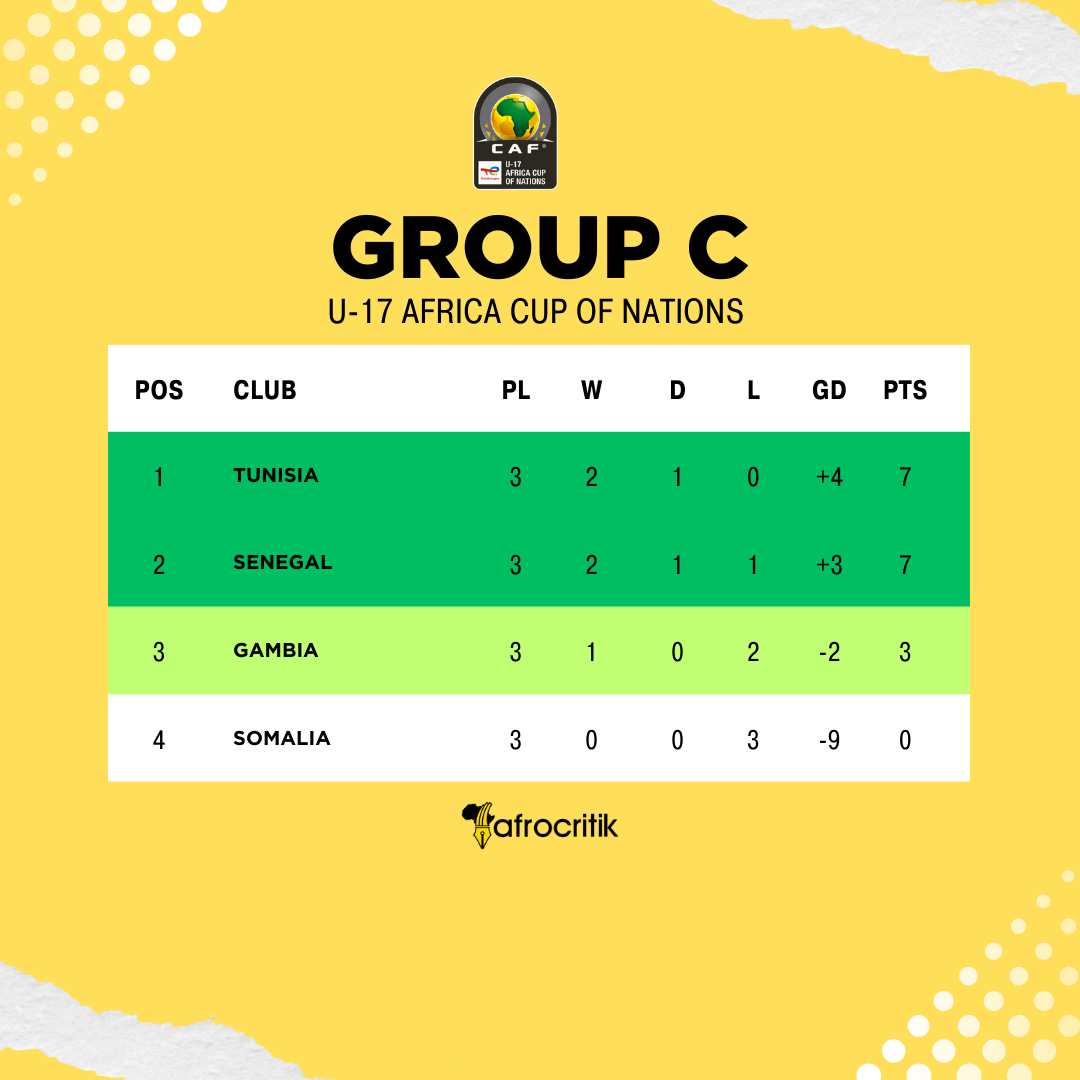
Gambia, despite showing flashes of brilliance—especially in their 5–1 demolition of Somalia—fell short. Losses to both Senegal and Tunisia left them third in the group. However, their solitary win keeps them in contention via the FIFA U-17 World Cup play-offs.
Somalia struggled throughout the group stage of the CAF U-17 Nations Cup. They failed to pick up any points, managing just one goal while conceding ten, and exited the tournament bottom of the group.
Group D
The Ivorians got off to a flying start, demolishing the Central African Republic 6–1, thanks to a sensational four-goal performance from Alynho Haïdara. They followed up with a goalless draw against a resilient Angola before sealing their dominance with a 4–2 victory over Mali. With two wins and a draw, they topped the group unbeaten and booked their place in both the knockout round of the CAF U-17 Nations Cup and the 2025 FIFA U-17 World Cup.
Mali also impressed. They opened with a hard-fought 2–1 win over Angola and beat the Central African Republic 2–0 to pick up six points. However, a 4–2 loss to Côte d’Ivoire saw them finish second, just a point behind the group leaders.
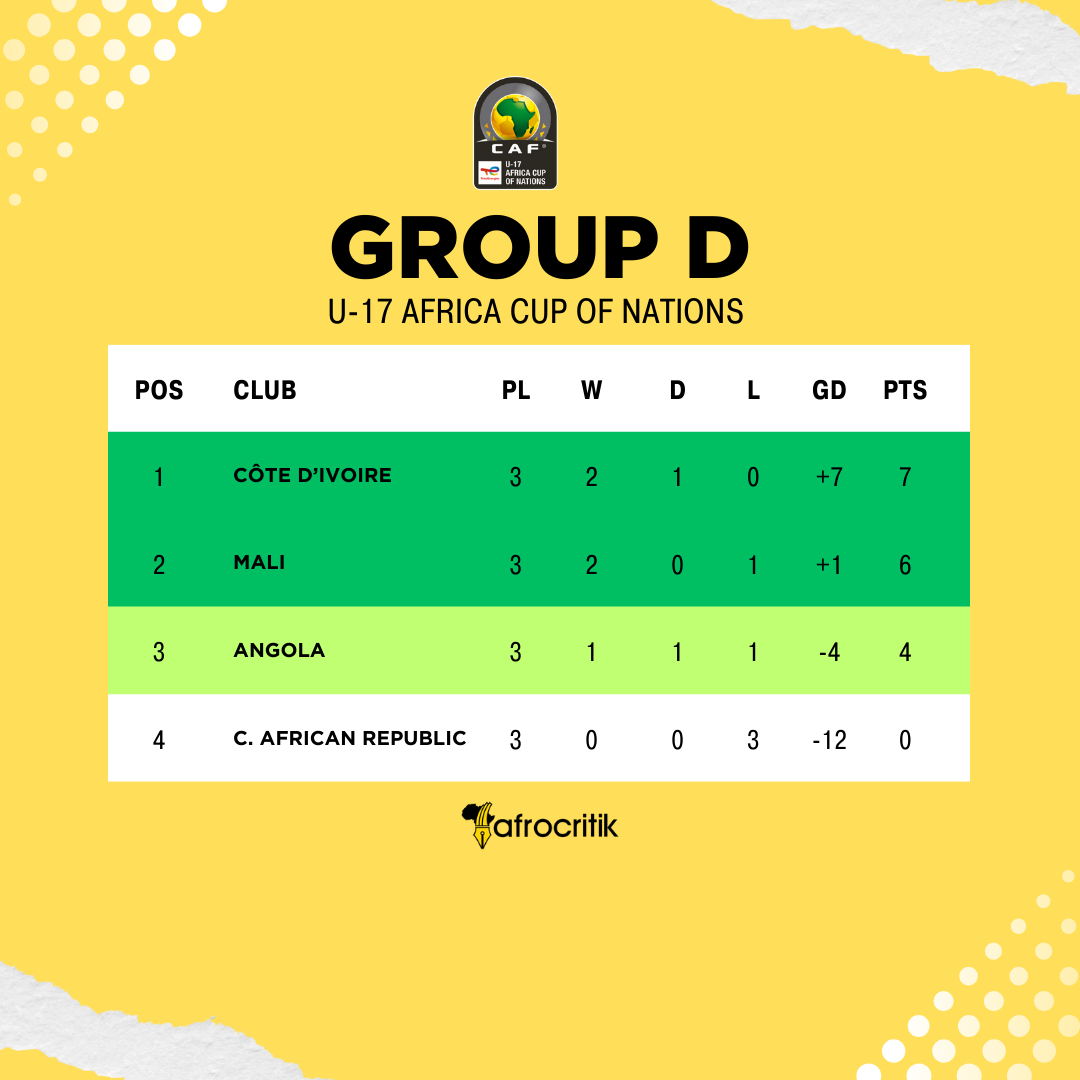
Angola mauled the Central African Republic 6–1 to the surprise of many, with Densel Liyun scoring a hat-trick and Muanha starring in the goals. But a loss to Mali and a draw with Côte d’Ivoire limited their tally to four points, placing them third. Nevertheless, they still have a chance to fight for a World Cup ticket via the play-offs.
The Central African Republic, unfortunately, struggled to find form in the tournament. They suffered heavy defeats in all three matches, conceding a tournament-high 14 goals while scoring only twice. They bowed out of the competition without a point.
Third-Place Playoff Battles for World Cup Spots
With eight World Cup spots already secured by the group winners and runners-up, the remaining two places will be decided through the following play-offs between the four best third-placed teams:
12 April 2025
- 16:00 – Uganda vs Gambia
- 19:00 – Egypt vs Angola
Venue: Ben M’Hamed El Abdi Stadium, El Jadida
Qualified Teams for Quarterfinals (and World Cup)
- Morocco
- Burkina Faso
- Tunisia
- Senegal
- Côte d’Ivoire
- Mali
- Zambia
- South Africa
They will be joined by the two winners from the play-offs, finalising Africa’s representation at the FIFA U-17 World Cup.
Standout Players So Far
Ashraf Tapsoba (Burkina Faso)
The breakout star of the tournament so far, Ashraf Tapsoba has dazzled with seven goals and two assists, making him the current top goalscorer. He also ranks second for assists, just behind Abdellah Ouazane of Morocco. Tapsoba is a physically imposing attacker with a sharp eye for goal, but he’s equally adept at linking up play and creating chances for teammates in dangerous areas.
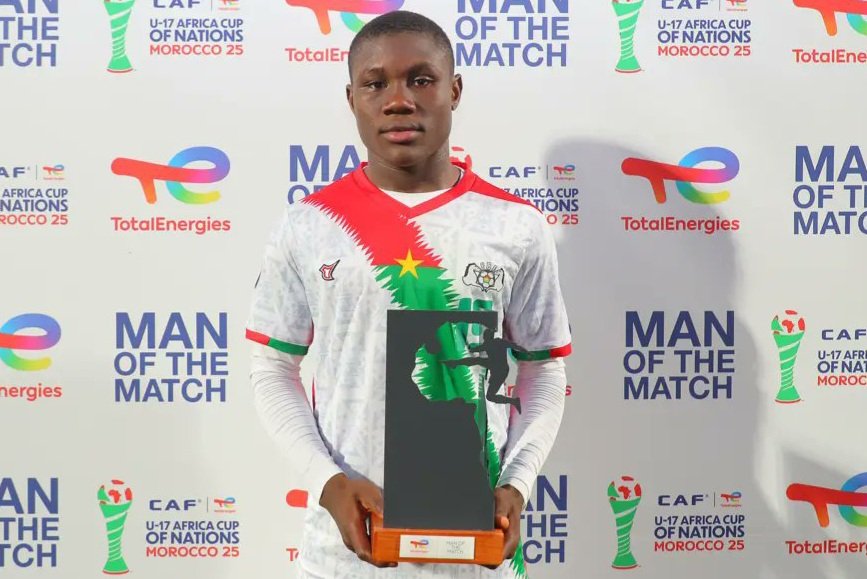
Ibrahima Sow (Senegal)
A calm yet commanding presence in midfield, Ibrahima Sow has been pivotal to Senegal’s unbeaten run. He’s scored two of Senegal’s three goals so far—the winner in their opening match against Gambia and a crucial penalty against Somalia.
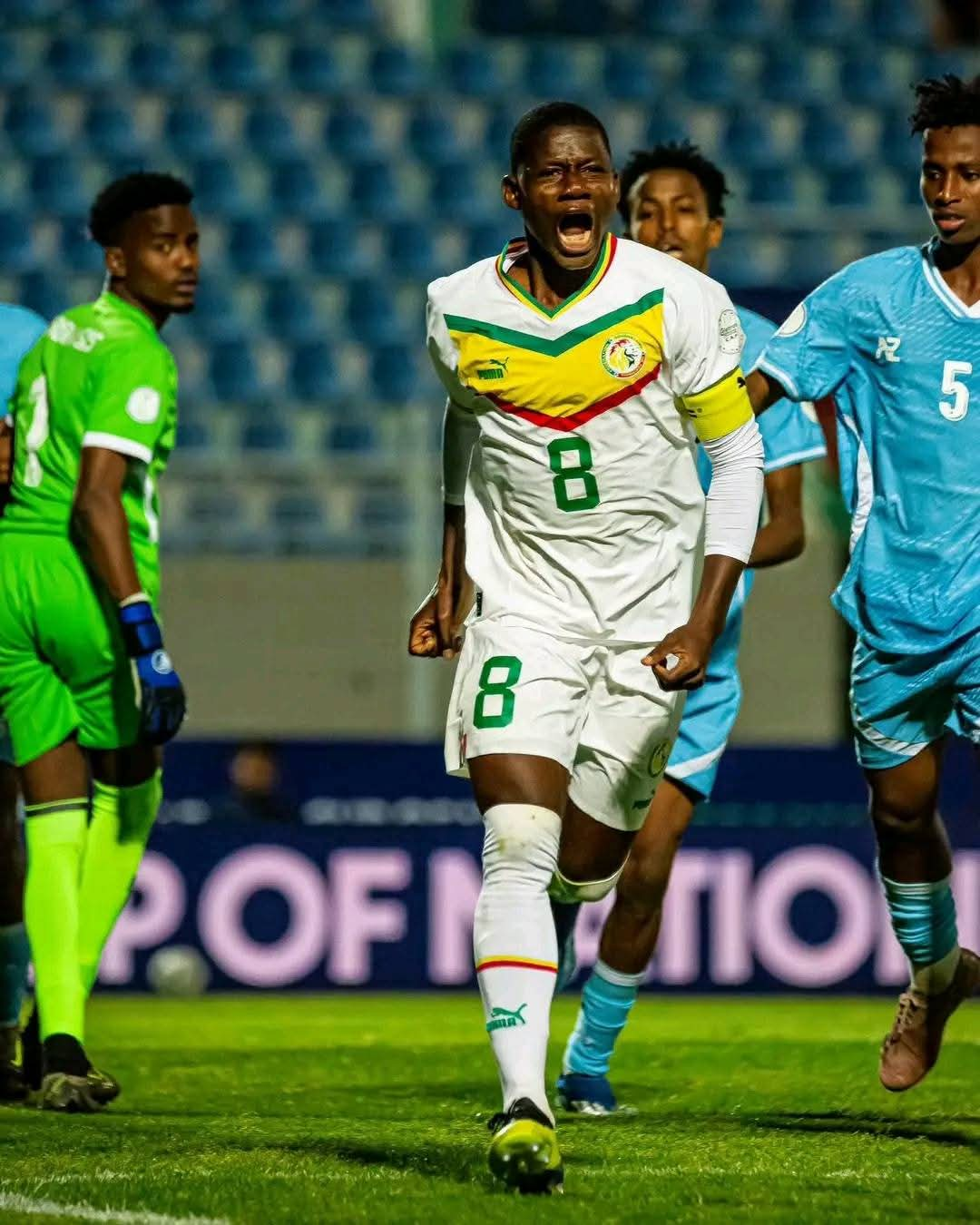
Beyond the goals, Sow’s intelligent positioning, vision, and composure have marked him as one of the tournament’s most promising midfielders. A player with serious upside, he’s surely catching the attention of scouts.
Ilies Belmokhtar (Morocco)
The Monaco winger has been a key figure for Morocco throughout the tournament. He has directly contributed to four of Morocco’s 11 goals, scoring three and assisting one. In the match against Uganda, Belmokhtar won a penalty (which he didn’t take) and still managed to score twice. He has consistently shown great promise—a clear talent to keep an eye on.
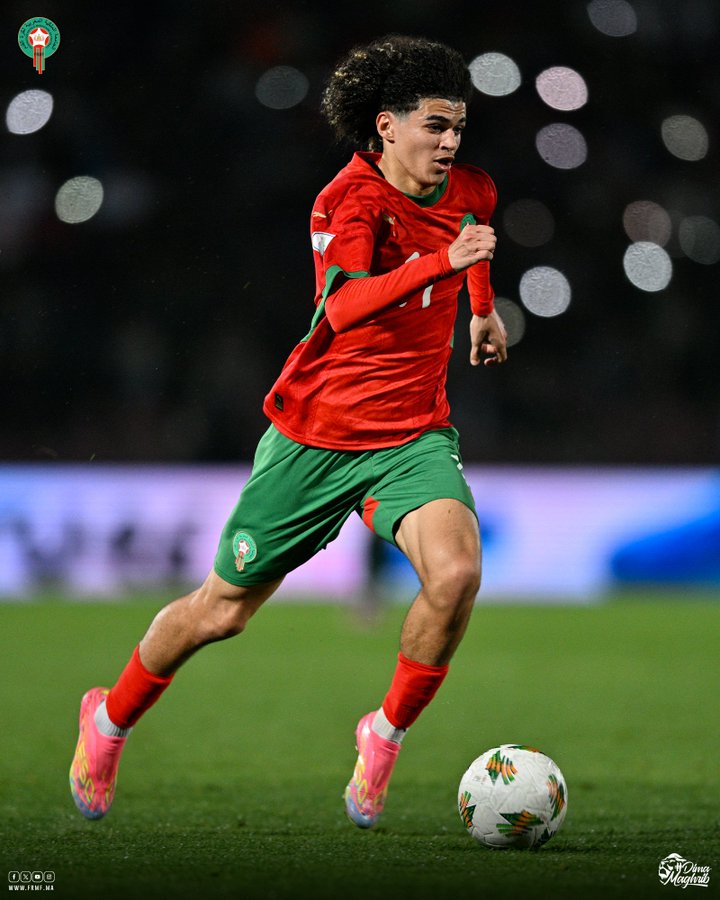
Title Contenders
Based on current form, individual performances, and overall squad balance, four teams look like the strongest contenders for the title: Senegal, Mali, Morocco, and Burkina Faso. Of these, Senegal, Morocco, and Burkina Faso stand out the most, thanks to their fluid, technical playing styles that make them highly effective in attack.
Senegal, the defending champions, possess a well-balanced squad with a sharp eye for goal and a solid backline. Morocco, buoyed by home support, play a modern, tactically refined game that could carry them all the way. Burkina Faso, the tournament’s dark horse, boast a strong physical presence and an unpredictable attacking force that makes them a real threat.
Mali, while consistently solid and dominant, may struggle to match the attacking flair of the other three. However, their cohesion, discipline, and experience make them a dangerous side as the knockout stages begin.
Quarterfinal Results
- Senegal 1–0 Morocco
- Mali 2–1 Burkina Faso
Upcoming Fixtures – 12 April 2025
- Uganda vs Gambia – 16:00
- Egypt vs Angola – 19:00
Venue: Ben M’Hamed El Abdi Stadium, El Jadida
One thing is clear: while the tournament doubles as a World Cup qualifier, it remains a competition to be won. Ten teams will ultimately emerge as Africa’s representatives on the global stage, but the battle for continental glory is far from over.
Tuka Letura is an experienced sports writer with over five years of experience in the craft. He uses data and statistics to provide analysis and commentary. From regional to worldwide competitions, he has covered a wide range of sports-related events and topics. He is devoted to sharing his enthusiasm for sports with his audience and engaging them with interesting anecdotes and viewpoints.


